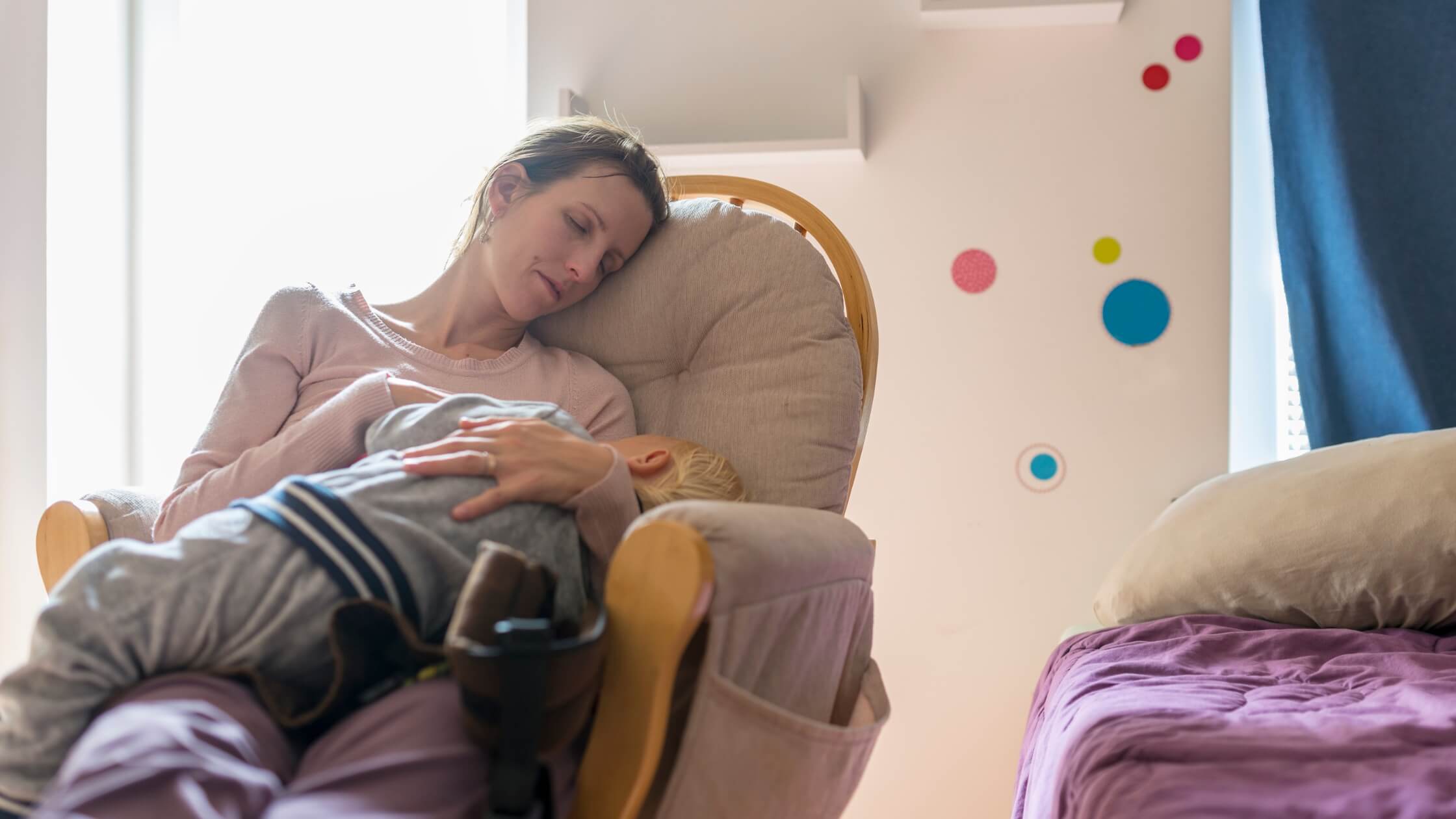Contact naps refer to the practice of a baby falling asleep while in physical contact with a caregiver, typically by being held, rocked, or even just being in the same room. This can involve the baby sleeping on the chest, arms, or lap of the caregiver, or even just being close enough to feel the warmth and comfort of their presence. In this blog we are doing a deep dive into contact napping to provide a full perspective for parents. Here are some of the benefits you can enjoy with contact napping:
Bonding
Contact naps can enhance the bond between the baby and the caregiver, especially if it’s the parent. The close physical contact can be comforting and reassuring for the baby, promoting attachment and bonding.
Safety
For very young infants, contact napping can be safer than sleeping alone, especially if the caregiver is awake and aware of the baby’s position and breathing. It can help prevent Sudden Infant Death Syndrome (SIDS) by keeping the baby in the caregiver’s sight and reducing the risk of suffocation.
Better Sleep Quality
Some babies find the motion and warmth of contact comforting and may sleep better when in contact with a caregiver. This can lead to longer, more restful naps.
Easier Sleep Cycle Transitions
Babies who are used to contact napping may find it easier to transition to taking longer naps independently in a crib or bassinet as they get older, since the pattern for sleep cycle connections were potentially developed earlier in infancy.
While there are positives to contact napping, there are also potential issues with the practice that parents should be aware of. Here are some potential issues that parents should consider and balance with the benefits.
Sleep Dependency
Over-reliance on contact napping can lead to difficulty in sleeping independently, which can be problematic as the baby grows and needs to learn to self-soothe and sleep on their own.
Limited Mobility
Caregivers who need to move around or perform tasks may find contact napping limiting, as they may need to stay in one place to keep the baby asleep.
Sleep Deprivation
Caregivers who are constantly holding or being in contact with the baby may experience sleep deprivation themselves, which can affect their health and ability to care for the baby.
Safety Risks
If the caregiver falls asleep while holding the baby, there is a risk of the baby rolling or being dropped. Additionally, if the caregiver is not awake and aware, the baby could suffocate if they are covered or if the caregiver rolls over onto them.
With full awareness of the pros and cons, here is some advice on how to effectively bring contact napping into your caregiving practice as a parent. Contact napping is often a natural part of caring for a newborn and doesn’t require formal teaching. However, if you want to encourage contact napping, here are some tips:
Create a Comfortable Environment
Make sure you and the baby are both comfortable when contact napping. This might mean finding a cozy spot to sit or lie down, and ensuring that the baby is well-supported and not at risk of rolling over.
Be Consistent
Try to establish a consistent routine for naptime, which can help the baby learn to associate contact with sleep.
Use Shushing and Patting
Some babies find the rhythmic motion and sound of patting or shushing comforting, which can help them relax and go to sleep.
Be Patient
It may take some time for the baby to get used to contact napping, and they may not always fall asleep immediately. Be patient and allow the baby to adjust at their own pace.
Gradually Increase Time
If you want to transition the baby to sleeping independently, you can start by increasing the amount of time they spend in the crib or bassinet after they’ve fallen asleep.
It’s important to note that while contact napping can be beneficial in many ways, it’s also important to balance the benefits with the potential risks and to ensure that the baby is safe and comfortable at all times. As the baby grows and develops, the baby may naturally start to sleep more independently, and contact napping may become less necessary.
Before You Go
We hope you enjoyed learning about contact naps. If you would like to know more about this, our sleep programs, or any of our excellent newborn care services, we are happy to help. Just contact us and we can go over your options and help you find the best path for your little one. If you have any questions about helping your baby to sleep better, or about your baby in general, please schedule a free, no strings attached consultation. We are experts in all things baby and sleep and would love to help!
💤Katie Bishop | The Early Weeks 💤
✅ Certified Master Pediatric Sleep Consultant
✅ Board Certified Holistic Healthcare Practitioner
✅ Advanced Newborn Care Specialist

![]()
